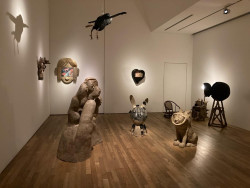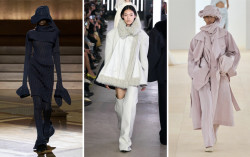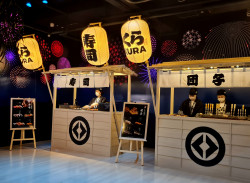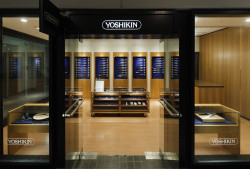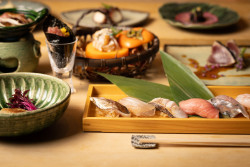
October 6, 2005
Place your Bets
Macau pays its respects to history while keeping a keen eye on the future
By Metropolis
Originally published on metropolis.co.jp on October 2005

Photos courtesy of mgto
“So you’re going to Macau? Good luck at the gambling tables.”
We met with many comments along these lines in the weeks leading up to our visit to the tiny Asian region. There’s no denying Macau’s reputation as a gamblers’ paradise, but not being the betting kind, we looked forward to experiencing its unique mingling of cultures, recent surges in development, and the exceptional architecture from its years of Portuguese control.
Macau (whose name derives from the Chinese “A-Ma-Gao,” or “Bay of A-Ma,” referring to the goddess of the sea) is often compared to its neighbor, Hong Kong, another former colony returned to China. Located just over 60 kilometers to the west, Macau is a quick ferry ride away. It’s a popular side trip for visitors to Hong Kong, but Macau’s charms as a historically rich land experiencing dizzying modernization and growth deserves wider recognition as a stand-alone destination.
Macau is considered a “Special Administrative Region” of China, and is actually composed of three distinct areas: the peninsula, which gives Macau its name and which is connected to mainland China by a 200-meter-wide isthmus; the central island of Taipa; and, to the south, Coloane, the smallest and greenest of the three. After arriving at Macau International Airport, we took a taxi through the humid dawn past the illuminated beauty of Sai Van Bridge, which connects Taipa to Macau. On the horizon we spotted Macau Tower, completed in December 2001 and the world’s tenth tallest freestanding structure.
For thrill seekers (like us) willing to shell out HK$1,000 (about ¥15,000), the heart-pounding climb to the top offers stunning views and an opportunity to confront any fear-of-height issues.
But the modern facilities that have sprung up in recent years are no match for the beauty of the churches, temples, fortresses and residences that carry an enormous amount of Macau’s cultural heritage. Their mix of hues, elegant European architecture, Western and Eastern religious symbolism and ornate Chinese script create an enchanting atmosphere.

Echoes of the nearly 450-year Portuguese rule, which ended in December 1999, reverberate strongest in the religious monuments. The granite façade of the Church of Mater Dei, commonly referred to as the Ruins of St. Paul, is one of Macau’s most popular tourist spots. The remains of the complex destroyed by an 1835 fire tells the story of Macau as an important crossroads in religion, academics and culture between the East and West. Designed by an Italian Jesuit and built by Christian Japanese stonemasons, the rich design incorporates figures of Jesus and Mary, Portuguese ships, Biblical verse in Chinese, and peonies and chrysanthemums representing China and Japan.
Seeing harmony between religions and architectural styles brings up a heartening aspect of Macau’s history. Despite years under foreign control and the influx of Catholic missionaries in a traditionally Buddhist and Taoist culture, Macau has never suffered serious conflicts due to differing creeds. This explains why so many of Macau’s structures have endured in such excellent condition.
Soaking up so much culture and history works up an appetite; good thing one is never far from a lovely meal in Macau, where flavors of Portugal, China, Africa, Japan, India and Southeast Asia are woven together into the local cuisine. The Flamingo Restaurant in the five-star Hyatt Regency Macau Resort serves favorites like giant prawns sautéed in garlic and the ubiquitous bacalhau (salted cod), prepared in myriad ways. The pristine Lua Azul inside Macau Tower offers excellent dim sum. Not to be missed for traditional Portuguese cuisine is the Military Club, a salmon-pink colonial building that is lit up at night, where the spacious dining hall is an atmospheric treat for the eyes. Almost every establishment in Macau serves Portuguese wine and wickedly strong coffee. For dessert, a visit to Lord Stow’s Bakery on Coloane or Margaret’s Café de Nata on the Peninsula for hot-from-the-oven egg tarts is a must.
Even if gambling is not your thing, a casino visit offers a fascinating peek into the Macau economy powerhouse. Shimmering lights and nonstop energy hint at gambling’s incredible appeal for tourists. To observe or take part in a different kind of betting, spend an evening in the stands of the Canidrome, Asia’s only greyhound-racing facility. It’s worth the small price of admission (around ¥1,500) to see trainers parade the ultra-sleek dogs and watch them take off with lightning speed around the track.
It seems appropriate that, just as Macau’s various peoples lived side by side for many years in harmony, so too do Macau’s casino business and cultural heritage. With plans for an enormous 24-hour entertainment complex in the works and the Historic Centre of Macau’s recently awarded status as a UNESCO World Heritage Site, it’s a good bet that this coexistence will continue for many years.
We visited Macau courtesy of the Macau Government Tourist Office (www.macautourism.gov.mo), whose Tokyo office (03-5275-2461) provides helpful travel information. Fly to Hong Kong and take the ferry to the Macau Ferry Terminal; airlines include Cathay Pacific, Japan Airlines or Dragonair. Or, transfer at a number of Asian cities onto Macau Airlines, TransAsia Airways or Eva Air to fly directly to Macau International Airport. Published rates for the five-star Hyatt Regency Macau start at HK$1,020 (approx. ¥15,000) per night. Visit http://macau.regency.hyatt.com for special offers.
[geo_mashup_map]
